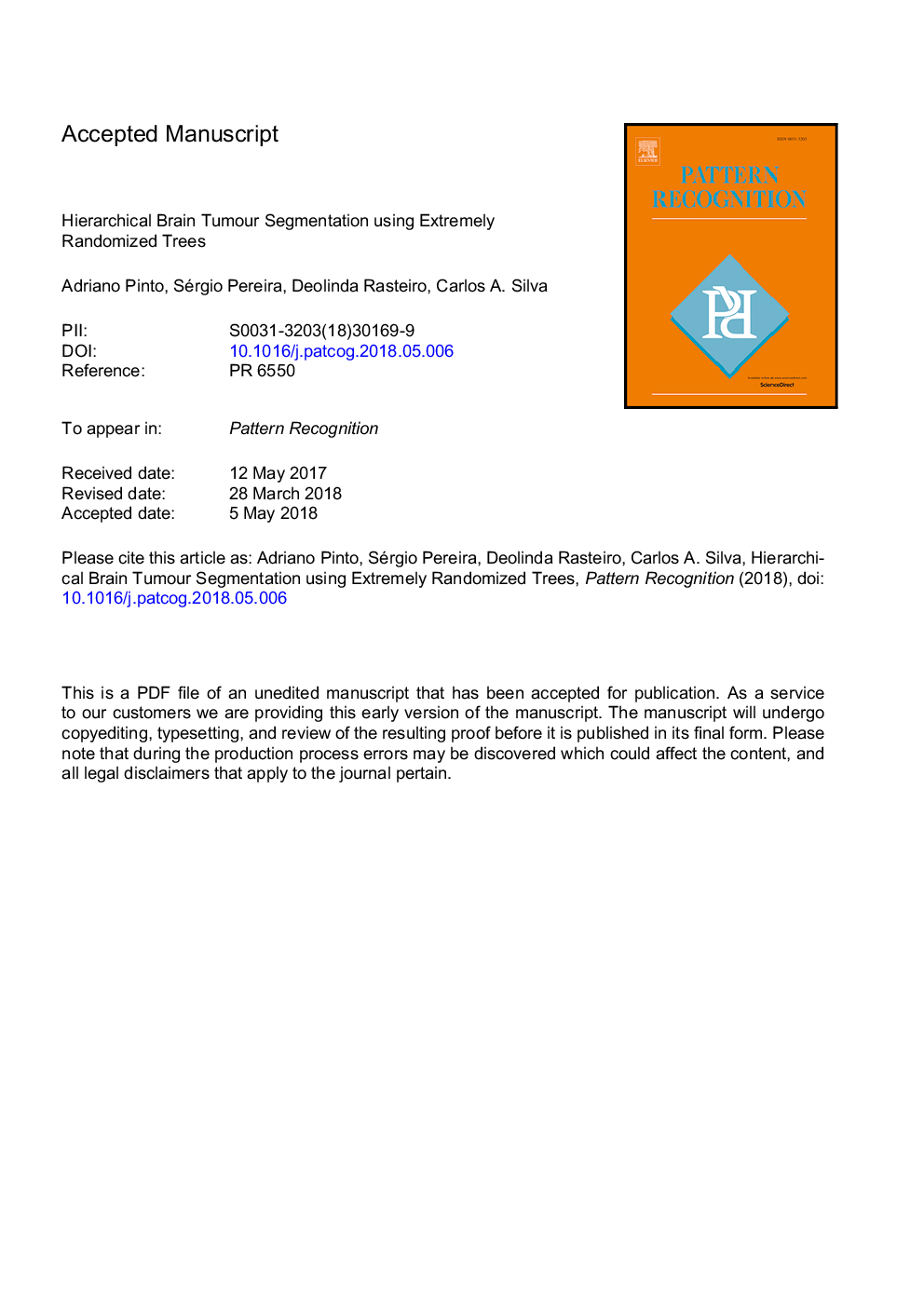| Article ID | Journal | Published Year | Pages | File Type |
|---|---|---|---|---|
| 6938771 | Pattern Recognition | 2018 | 30 Pages |
Abstract
Gliomas are the most common and aggressive primary brain tumours, with a short-life expectancy in their highest grade. Magnetic Resonance Imaging is the most common imaging technique to assess brain tumours. However, performing manual segmentation is a difficult and tedious task, mainly due to the large amount of information to be analysed. Therefore, there is a need for automatic and robust segmentation methods. We propose an automatic hierarchical brain tumour segmentation pipeline using Extremely Randomized Trees with appearance- and context-based features. Some of these features are computed over non-linear transformations of the Magnetic Resonance Imaging images. Our proposal was evaluated using the publicly available 2013 Brain Tumour Segmentation Challenge database, BRATS 2013. In the Challenge dataset, the proposed approach obtained a Dice Similarity Coefficient of 0.85, 0.79, and 0.75 for the complete, core, and enhancing regions, respectively.
Keywords
Related Topics
Physical Sciences and Engineering
Computer Science
Computer Vision and Pattern Recognition
Authors
Adriano Pinto, Sérgio Pereira, Deolinda Rasteiro, Carlos A. Silva,
